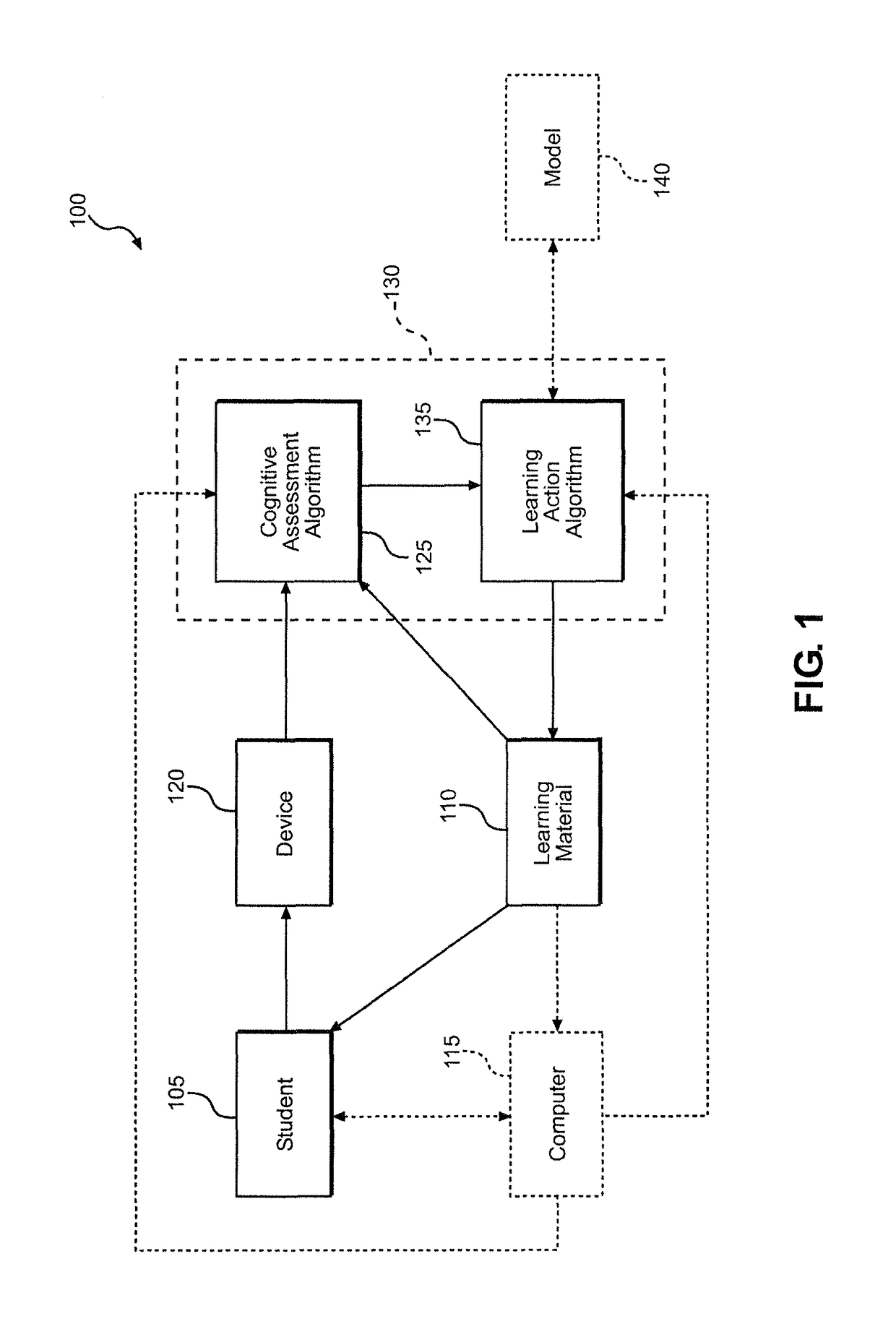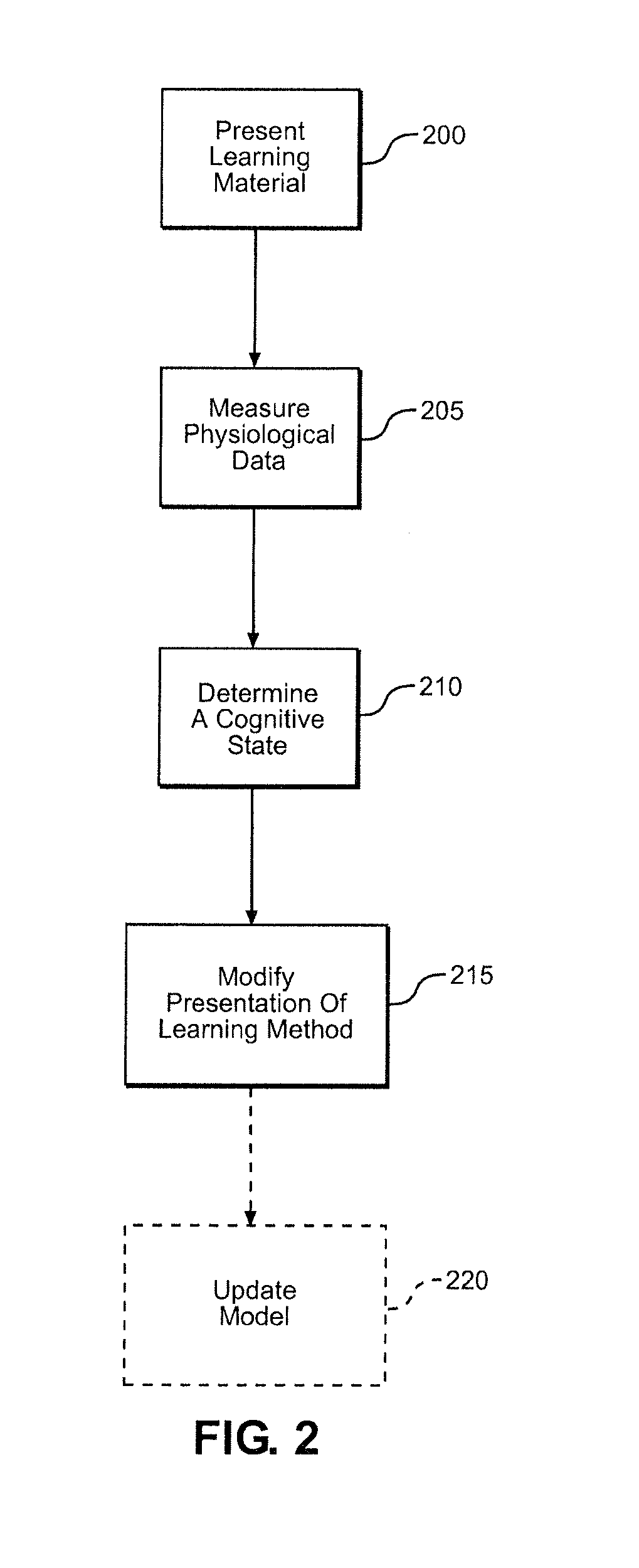System and method for improving student learning by monitoring student cognitive state
a student learning and cognitive state technology, applied in diagnostic recording/measuring, instruments, applications, etc., can solve problems such as inability to effectively use this information to improve learning outcomes, affecting the delivery of learning material, and affecting the learning outcome. the effect of complexity or the rate of delivery
- Summary
- Abstract
- Description
- Claims
- Application Information
AI Technical Summary
Benefits of technology
Problems solved by technology
Method used
Image
Examples
Embodiment Construction
[0019]Detailed embodiments of the present invention are disclosed herein. However, it is to be understood that the disclosed embodiments are merely exemplary of the invention that may be embodied in various and alternative forms. Therefore, specific structural and functional details disclosed herein are not to be interpreted as limiting, but merely as a representative basis for teaching one skilled in the art to variously employ the present invention.
[0020]With initial reference to FIG. 1, there is shown a schematic view of a system 100 for improving learning in accordance with the present invention. A student 105 interacts with learning material 110, either through a tutor (not shown) or through a computer 115. Learning material 110 generally includes the type of material typically presented to a student in a learning environment, such as lectures, questions, problems or activities, although learning material 110 is not limited to such material. Preferably, computer 115 includes a ...
PUM
 Login to View More
Login to View More Abstract
Description
Claims
Application Information
 Login to View More
Login to View More - R&D
- Intellectual Property
- Life Sciences
- Materials
- Tech Scout
- Unparalleled Data Quality
- Higher Quality Content
- 60% Fewer Hallucinations
Browse by: Latest US Patents, China's latest patents, Technical Efficacy Thesaurus, Application Domain, Technology Topic, Popular Technical Reports.
© 2025 PatSnap. All rights reserved.Legal|Privacy policy|Modern Slavery Act Transparency Statement|Sitemap|About US| Contact US: help@patsnap.com



